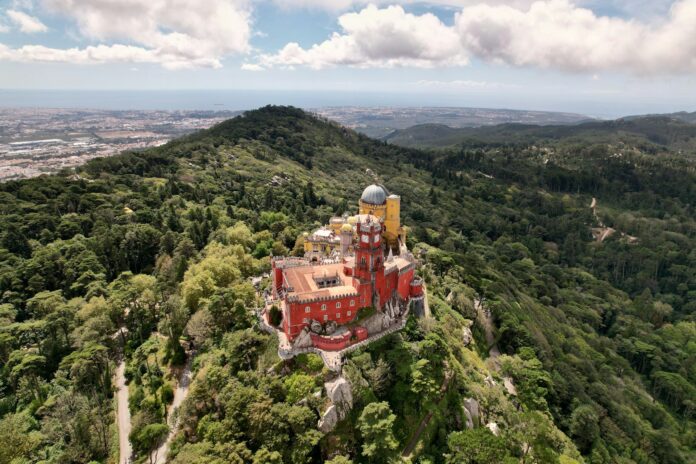Forget everything you’ve heard about Mykonos shutting down for winter. While the beach clubs pack away their sunbeds and cruise ships disappear, a different island emerges between October and March. This isn’t the sanitised summer version sold in travel brochures – it’s a working island where fishing boats replace pleasure craft and winter storms reveal centuries of architectural ingenuity.
From November to March, average temperatures hover between 8-15°C (46-59°F), perfect for exploring without summer’s intense heat. Yes, you’ll need a warm jacket. Yes, some days bring dramatic storms. But these same conditions create experiences you’ll never find in high season.
Explore Fokos Beach In Storm Season
From November to February, the dramatic waves at Fokos Beach on the northern coast create a spectacular scene entirely different from its summer calm. The best storm-watching happens two hours before sunset, when the light catches the spray from waves hitting the eastern headland. Park at the end of the tarmac road – the dirt track becomes treacherous after rain.
The abandoned copper mines visible from the beach access road tell a hidden story of 1930s industrial ambition. Look for the remains of the old mineworkers’ path zigzagging down the cliff. Pack waterproofs and sturdy boots – this exposed coastline gets the full force of the winter meltemi winds, and the natural stone path – beautifully buffed by the elements – gets slippery.

Watch Winter Fishing At The Old Port
Mykonos’s Old Port transforms from tourist hub to working harbour between October and March. The real action happens between 6:30-8am when the caïques (traditional fishing boats) unload their catch directly onto the stone quay beside the harbour wall. The morning fish market here is pure theatre – look for the spanking fresh red mullet and sea bream laid out on beds of seaweed-covered ice.
Winter specialities include local squid, at its best in early winter, skorpina (scorpion fish) and sargos (white sea bream), both considered at their best in January. The harbourmaster’s office, in the whitewashed building with blue trim, posts daily weather updates that the fishing fleet uses – these detailed local forecasts are more reliable than any app. And of course, any local taverna buying a batch is one you want to be giving your patronage by lunch time!
Read: Where to eat in Mykonos Old Town
Discover Ano Mera Without The Crowds
The island’s second-largest settlement, centered around the working monastery of Panagia Tourliani (founded 1542), reveals its true character in winter. The monastery’s silver icon collection is open to visitors year-round – ring the bell at the side gate rather than the main entrance in winter. The marble fountain in the courtyard, carved in 1767, is particularly worth studying.
The village square’s tavernas transform in winter – look for handwritten signs advertising winter specialities like revithada (chickpea stew) and local goat soup. Between October and April, the square fills with locals after Sunday morning service, when the kafenions serve souma (local grape spirit) with dried figs.
Read: The best restaurants in Rhodes
Visit The Working Windmills
The Bonis Windmill, part of the Agricultural Museum network, offers year-round access to its restored grinding mechanism. Winter reveals the ingenious architecture – watch how the adjustable sail system handles sudden wind changes, and notice the drainage channels carved into the foundation stones.
The best time to visit is during or just after rain, when you can see the water management system in action. The current caretaker maintains a fascinating collection of local weather lore in his logbook – worth asking to see if you speak some Greek.

Photograph Storm Seas At Little Venice
The medieval waterfront houses of Little Venice were built by shipping merchants to withstand winter storms. During northerly winds (most common December-February), waves crash dramatically against the buildings’ foundations. The stretch between Kapitanios and Skaros provides the best storm-watching vantage points – look for the worn grooves in the stone steps where centuries of waves have carved patterns.
The buildings’ ingenious water-deflecting architecture becomes obvious in winter: notice how the overhanging upper floors are angled to direct spray back into the sea. Early morning brings the most dramatic light, especially during the winter solstice when the sun rises directly behind the waves. Sunset in Little Venice is equally breathtaking, regardless of the season.
Walk The Vioma-Ano Mera Trail
The well-marked 4km path between Mykonos Vioma Organic Farm (a starting point rather than available for a visit – it’s closed from November to April) and Ano Mera offers one of the island’s most accessible winter walks. Starting from the vineyard, the route follows ancient field boundaries marked by traditional xerolithies (dry stone walls) that have stood for centuries. In winter, when the summer crowds have departed, you can clearly see how these walls were engineered to prevent soil erosion during the rainy season.
The path passes the whitewashed chapel of Agios Lazaros, usually closed but worth examining for its traditional Cycladic architectural features including a distinctive triple-bell arch. The final approach to Ano Mera offers views across the valley to Panagia Tourliani Monastery, particularly striking in winter when the air is clear and the dome stands out against dark storm clouds. Note that parts of the path can become muddy after rain – avoid walking for at least a day after heavy precipitation.

Visit The Maritime Museum
Housed in a 19th-century sea captain’s mansion in Tria Pigadia, the Maritime Museum boasts winter opening hours that allow unhurried exploration of its collections. The most fascinating exhibits are the navigation instruments and ships’ logs from the 1800s, showing how captains handled winter storms before modern weather forecasting.
The building itself is worth studying – notice how the windows on the seaward side are smaller and set deeper into the walls for storm protection. The museum’s winter visiting hours (10am-2pm, Tuesday-Saturday) coincide with the best light for photography in the nautical instrument room.
Walk The Lighthouse Route
The 19th-century Armenistis Lighthouse stands on Mykonos’s northwestern tip, accessible via a maintained coastal path from Agios Stefanos. The winter route requires more care but offers better views – on clear days between November and February, you can see all the way to Tinos and sometimes even Syros.
The lighthouse, still operational and managed by the Hellenic Navy Lighthouse Service, is most dramatic during the early morning hours when winter storms approach from the north. Time your visit for sunrise (check local times – they vary significantly through winter) to see the light’s beam cutting through storm clouds. The path is well-maintained but can be slippery after rain – proper hiking boots are essential.

Experience Delos In Winter
While summer crowds cross to Delos daily, winter boats run only when weather permits (typically 3-4 days per week from October to March). Check schedules at the Old Port ticket office the day before – the morning boat (departing 10am) usually has the best chance of running in winter weather.
Winter visitors can explore the Temple of Apollo and the Terrace of the Lions in solitude. The site’s drainage systems, originally built by the Romans, still work perfectly – watch how rainfall is channeled through the ancient city via a network of gutters and cisterns. The museum’s winter hours (9am-3pm) mean you can time your visit to catch the best light on the mosaics.
While summer crowds cross to Delos daily, winter boats run only when weather permits (typically 3-4 days per week from October to March). Check ferry tickets at the Old Port ticket office the day before – the morning boat (departing 10am) usually has the best chance of running in winter weather.
Explore The Folklore Museum
Located in a restored 18th-century house near the Old Port, the Folklore Museum maintains regular winter hours (11am-4pm, Monday-Friday). The winter exhibits focus on traditional island life during the off-season – don’t miss the collection of storm lanterns and the displays showing how houses were winterized using seaweed insulation.
The building’s traditional rain-collection system remains active – look up in the courtyard to see the elaborate network of gutters and pipes that channel rainwater into the ancient cistern below. On rainy days, you can hear water moving through the original terracotta pipes inside the walls.
Experience Local Winter Festivals
Mykonos’s religious calendar comes alive between December and March, offering glimpses of island traditions that predate tourism entirely. The Feast of Agios Nikolaos (6th December), patron saint of sailors, sees the Old Port’s fishermen gather at the small harbourside chapel for blessing ceremonies followed by communal feasting.
Carnival celebrations in February bring Ano Mera’s square to life with traditional music and dancing – far removed from the polished performances staged for summer visitors. The pre-Lenten period also sees tavernas serving special dishes like lagana flatbread and taramosalata that rarely appear on tourist menus.
Perhaps most atmospheric is Epiphany (6th January), when a priest throws a cross into the harbour and young men dive into the freezing water to retrieve it – a tradition unchanged for centuries. Arrive early to secure a spot on the quayside.

Mykonos In Winter: The Essential Information
Practical Considerations & Packing Tips
Many restaurants close, but those that remain open serve more interesting food than summer’s tourist menus. If you find a Mykonos restaurant or bar full of locals, particularly around the Old Port and inland villages, then it’s pretty much guaranteed to be good!
Winter also brings significantly better value for accommodation – you’ll find luxury villas to rent at a fraction of summer prices, often with flexible cancellation policies to account for weather disruptions.
Bring proper waterproofs and walking boots – summer sandals won’t cut it on wet marble steps. Pack layers – temperatures can swing significantly between sunny afternoons and evening winds.
Most importantly, bring flexibility. Mykonos in winter operates on island time and weather patterns. Some days the ferries won’t run. Some mornings will be too stormy for outdoor exploration. But these same conditions create the authentic experiences that summer visitors never see.
Weather Through The Season
December brings the heaviest rainfall (averaging 70mm), but between storms expect crisp, clear days perfect for photography. January and February see the strongest meltemi winds – essential for understanding why the island’s architecture evolved as it did.
The winter light is photographer’s gold – clear, sharp, and lasting longer than you’d expect. Sunrise moves from 7:15am in October to 6:30am by March, while sunset shifts from 6:30pm to 7:45pm.
Getting There & Around
Aegean Airlines maintains year-round Athens-Mykonos flights, though schedules adjust for winter demand. Morning flights have the best chance of operating in strong winds. Always book flexible tickets – winter weather can disrupt schedules.
Blue Star Ferries runs daily services from Piraeus throughout winter. The larger ships handle rough seas better than summer’s high-speed vessels. Local buses connect Mykonos Town with Ano Mera every couple of hours (reduced from summer’s hourly service).
Important Note About Travel In Winter Greece
While we’ve endeavoured to provide the most up-to-date information available at time of publication, visitors to Greek islands in winter should note that timetables, opening hours and services can be highly unpredictable. Ferry and flight schedules often change with little notice due to weather conditions or operational decisions. Museums and sites may alter their opening hours without updating their official listings, and some facilities mentioned may close unexpectedly for extended periods during the off-season.
We strongly recommend:
- Calling ahead to verify opening hours on the day of your visit
- Checking ferry and flight status the day before and morning of travel
- Building flexibility into your schedule
- Having backup plans for days when weather affects transport or activities
- Carrying cash, as some card machines may be offline in winter
This unpredictability is part of the authentic winter island experience – embracing it rather than fighting it will make for a more enjoyable visit.





